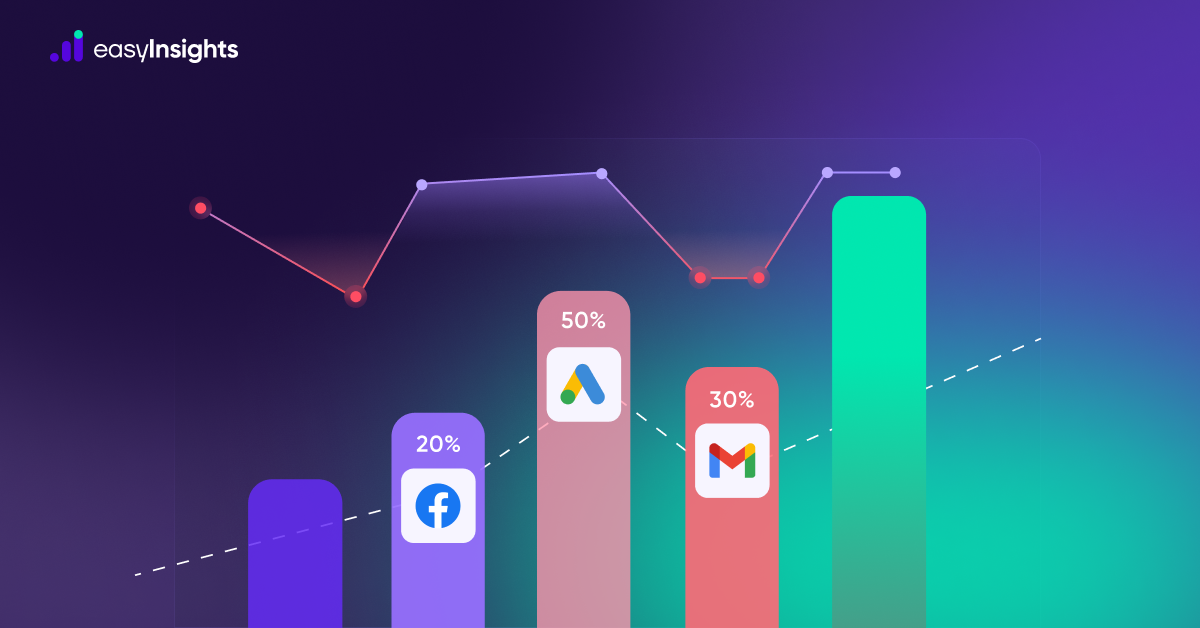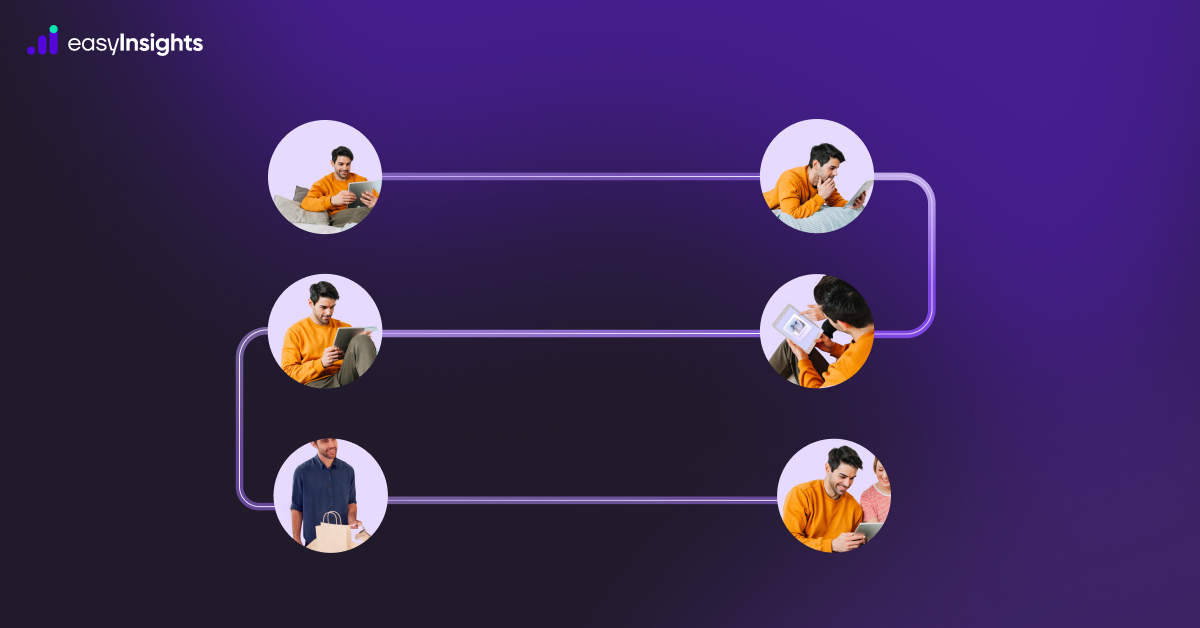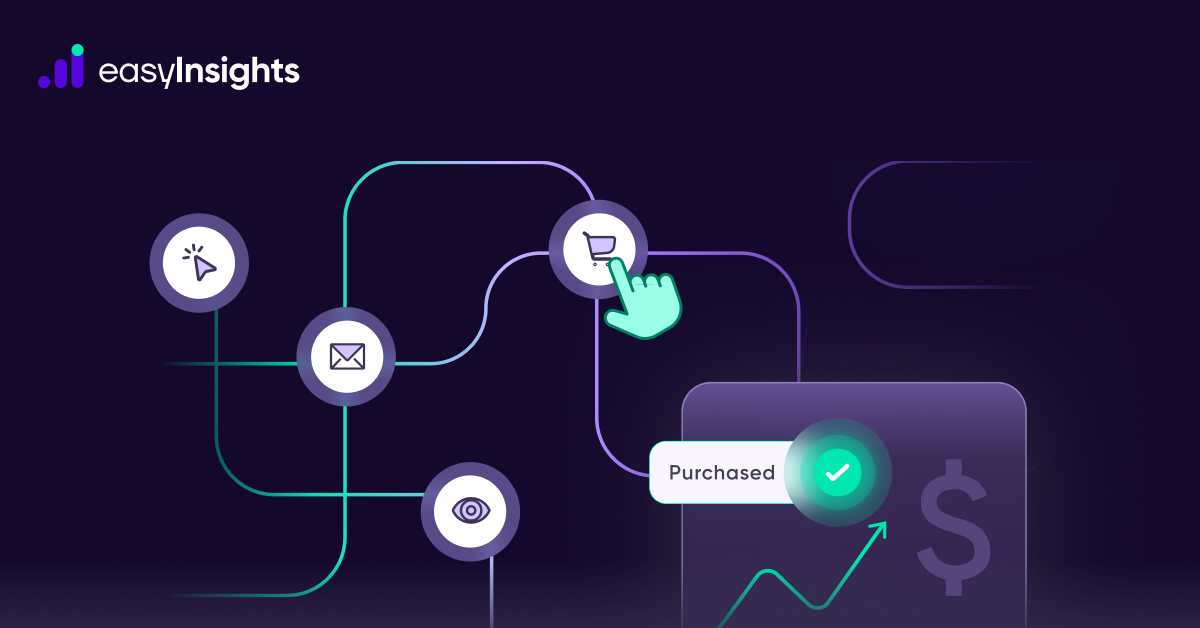
Since the dawn of online marketing, business owners and marketers have put in a lot of time and effort to identify which marketing channels bring in the most business. After all, throughout the buyer journey, there are multiple touchpoints where leads can convert into paying customers, and attributing a sale to the correct one is vital to the success of any campaign.
Now, the question to ask is – “what was the actual trigger for a lead to finally click on ‘Buy Now’?”
If you are able to get this right, you will be well on your way to optimizing your marketing funnel allowing you to tap into new niches and generate thousands of dollars in potential revenue.
You need a reliable way to identify the exact point of conversion. This is where Attribution Models come into the picture.
Attribution models can help you decode the chain of events that leads to a sale – mapping it from the moment the customer clicks on your ad till crediting the right channel for that lead. Two such models are First Click and Last Non-Direct models.
Also Read: Everything You Need To Know About Marketing Attribution Models
Jump ahead to:
What are First Click and Last Non-Direct models?
As you would have guessed by now, First Click (FC) and Last Non-Direct (LND) are both attribution models that determine how the credit for conversions is assigned to touchpoints in conversion paths.
They help you retrace the steps a lead would have taken to (a) arrive on your landing page and (b) make a purchase or sign up for your offer.
Consider this scenario
Someone lands on your landing page via a Facebook ad, however, he/she doesn’t take action just then. A couple of days later they do a Google search to find your website and proceed to fill out a lead form.
According to the First Click Model

First Click or First Touch Attribution Model allocates the entire credit of the conversion to the first touchpoint of the customer journey.
So, the lead credit goes to the Facebook ad.
As per the Last Non-Direct Attribution Model

On the other hand, the Last Non-Direct Attribution Model assigns credit to the last touchpoint in the conversion path, unless the lead directly landed on your landing page by typing in your URL into their browser. This model gives weightage to the last touchpoint in the customer journey and gives it all the credit for the conversion. Pretty straightforward.
In this case, according to the LND attribution model, the credit for the lead will be attributed to ‘Google search’ and not the Facebook ad.
Performance and Budget – The Decisive Signals for both FC and LND models
The FC model is ideal for the Awareness Stage of the typical buyer journey or Top Funnel Campaigns. This is a critical period when a prospect has not yet made up his mind about a purchase or subscription. At this point, he or she is considering different alternatives and may want more validation before choosing a product. The FC model gives clear insights on which Awareness campaigns one should invest in.
For example, if you are considering whether to choose a search or display campaign to target a niche audience, FC data can provide valuable insights. With the data of the exact source through which the lead entered your sales pipeline in the first place, you will have identified the channels to invest in.
Similarly, if you are a premium brand or have a longer sales cycle, the FC model helps you in identifying the channel that brought you a particular lead that just converted. This also helps you map the customer’s lifecycle journey.
LND only takes into account the conversion stage or Bottom Funnel Campaigns to decide whether a campaign has been successful. It gives actionable insights on which conversion campaigns to investing in.
Many marketers consider the last interaction before purchase as the clincher which is why they might emphasize the last touchpoint to the exclusion of other contributing factors. However, in the case of an organic search when the lead searches for a specific product by name, LND will assign credit to the last channel prior to the final purchase interaction.
For example, if a lead had downloaded an app or watched a video on social media during the evaluation stage a week or two prior to a direct purchase, the credit for conversion will go to the app download or video engagement and not to the page on which they had landed where they found such app/video.
Benefits of looking at both FC and LND simultaneously
Looking at either FC or LND in isolation may not provide the true picture of the success of a campaign.
For example, say you use brand and non-brand search ads + display network and YouTube ads to drive leads. In these cases, it is very likely that the users landing on your page and converting are doing so because they first discovered you via any of these ads. They may not take action at the time but might come back to your website later.
However, when using LND as the attribution model, it might seem that search campaigns (both brand and non-brand) are providing only 60-70% of conversions or that the yield of Display Network campaigns and YouTube is less than expected.
This might naturally lead you to think that display and YouTube campaigns are not cost-effective. However, pausing these campaigns can impact your overall business metrics because both are capable of bringing a large inflow of traffic to your site at a much lower cost than other alternatives.
If you are on a tight budget, non-brand search campaigns which may seem an obvious choice when you are looking at data from the LND attribution model may start to look no so great when analyzed through the lens of the first click attribution model.
Thus, it may be very much possible, that when you are looking at data based on both the attribution model, you are able to follow a more holistic view on the performance of different channels and campaigns and accordingly optimize for higher impact on your business.
Tracking Multiple Attribution Models in with EasyInsights

Regardless of the attribution model you are working with, Easy Insights helps you compare and contrast between different models- FC, LND, Markov, etc. – effortlessly in just a few clicks.
It can help you identify the right time for expanding Top Funnel campaigns, improving RoI, and lowering the overall Customer Acquisition Cost.
With Easy Insights, you can rationalize the overall ad spend and strengthen the entire funnel from top to bottom.
Case Study
In the above example of the transaction data of a brand, you can easily understand that in January, out of the 112 transactions, 99 were via the Display campaigns thanks to the FC data. Similarly, when it comes to non-brand search campaigns, the campaigns are mainly acting as lead nurturing ones, rather than bringing direct conversions.
A side by side comparison of FC and LND models in EasyInsights can help you evaluate campaign performance month on month seamlessly making data-backed strategy decisions possible that are likely to provide better RoI outcomes than before.
Conclusion
While it’s good to have a single attribution model(generally last non-direct) in place when making your day to day micro-level campaign optimization, it is a good idea to have an alternative attribution model(generally first click) to periodically compare your results with and make macro-level decisions on budget distribution. And in case your spends are really high(above a million dollar per annum), it makes sense to have an attribution model custom-built for your business that takes into account the user journey specific to your industry and business model.
EasyInsights edge
We are not only able to customize the attribution model to your business but also able to provide you the first-click attribution model with the lookback window of up to 1 year (most of the analytics tools including google analytics provide this for up to 90 days only).
How EasyInsights can help you work better with your Raw Adtech Data

EasyInsights works with raw adtech data for data activation and data enrichment in a few key ways:
Data Collection and Transformation:
- EasyInsights connect directly to your ad platform allowing it to access and extract the raw data you’ve collected.
- Data Transformation: EasyInsights then cleans, normalizes, and enriches the data to make it usable for activation purposes. This may involve tasks like:
- Formatting data: Ensuring all data points are in a consistent format.
- Handling missing values: Filling in missing data points or removing them according to your preferences.
- Enriching data: Adding additional data points from other sources to create a more comprehensive picture of your customers.
Data Activation:
- Segmentation and Targeting: It allows you to segment your audience based on various criteria like demographics, behavior, and interests using the enriched ad platform data.
- Multi-channel Marketing: You can then use these segments to activate your audience across different marketing channels like email, social media, and advertising platforms.
- Customer Relationship Management (CRM): The data can be used to personalize outreach and interactions with customers within your CRM system.
- Marketing Attribution: EasyInsights can help you understand how different marketing channels contribute to conversions and optimize your marketing spend accordingly.
Key Feature:
- Offers features like customer data platform (CDP) capabilities, marketing automation, and campaign management tools.
- Focuses on reverse ETL (extracting data from your warehouse and sending it to marketing tools) and offers pre-built integrations with various marketing platforms.
EasyInsights is a marketer’s preferred tool for first party data activation.
In this age of cross-channel marketing, EasyInsights offers a comprehensive platform to collect, store, and transform all your first-party data.
EasyInsights enhances marketing campaign efficiency in a cookieless landscape with accurate ad signals. It helps brands step away from surface-level metrics and unleash the potential of first-party data to optimize marketing strategies, ensuring a superior Return on Ad Spend (ROAS). It does all this, while being a highly affordable no-code platform with an exceptional customer support apparatus.
Sign up for a demo today to see EasyInsights in action.








